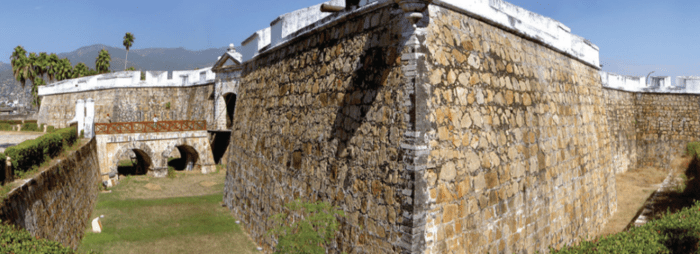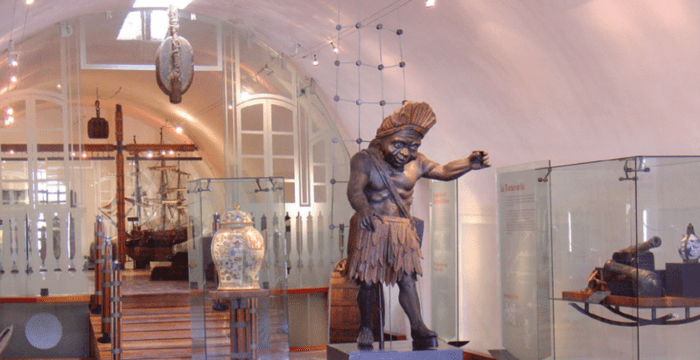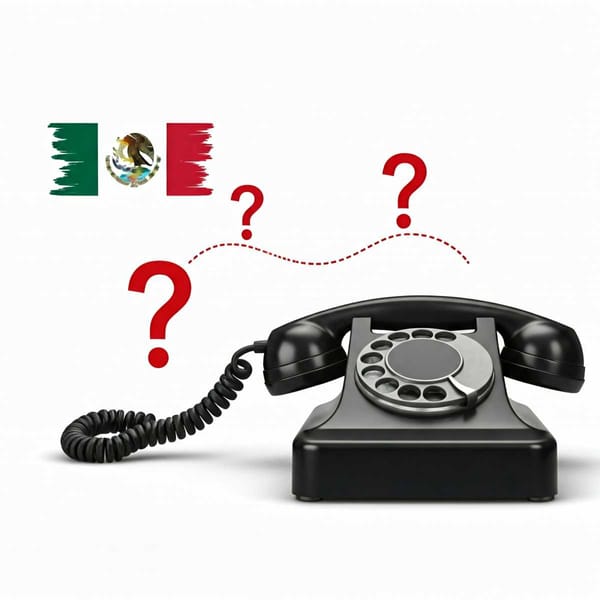Fort of San Diego Museum in Acapulco, a port that looks to the East
The San Diego Fort in Acapulco is part of the historical complex of fortresses that were built to defend the most important ports of Mexico from the constant onslaught of piracy.

The fort of San Diego in Acapulco is part, along with the fortress of San Juan de Ulua, the bastion of Ciudad del Carmen, the fortified system of Campeche, and the fortification of Bacalar, of the historical complex of fortresses that were built to defend the most important ports of Mexico from the constant onslaught of piracy. While the latter was the gateway to Europe, Acapulco was the port that looked eastward.
Due to the earthquake of 1776, the original fort of San Diego -which had functioned for more than 150 years- collapsed, so a new fort was built, which inherited the name of the first one. The building is unique for its design, in it, the most advanced architectural concepts of the time were applied, this characteristic makes it a masterpiece of military engineering of all times.
Its pentagonal plan allows the defense on all sides, and it is surrounded by a dry moat. It could accommodate two thousand men with provisions and ammunition for a year since it has an efficient system to capture, concentrate and conserve rainwater, and numerous vaulted rooms around the central courtyard. The complex has an area of nine thousand square meters. After fulfilling its role as guardian of Acapulco and the Manila Galleon, it has been a battlefield for the armies that in different stages of Mexico's history were engaged in libertarian struggles.
The fort of San Diego is the most important historical monument of the port. The history of Acapulco is largely the history of trade between Mexico and the Orient, two enormous regions rich in products appreciated around the world, but the most important wealth was the amazing diversity of cultures that came into contact. Acapulco was the gateway to the two great Eastern civilizations: China and India. But also of the immense variety of products and influences of peoples with different languages and religions that entered through Acapulco, through the galleons that departed full of merchandise from the port of Manila in the Philippines.
This port had a cosmopolitan and polyglot society, much more ethnically diverse than that of any other colony in the Spanish Indies. It should also be considered that the galleon was the only source of information since through this means one could learn political news, receive letters from family and friends and keep abreast of events in the colonies.

Acapulco, port of destination of the Nao de China, was dressed up for the arrival of the ships. At the departure of the galleon, fanfares were played, which not only reflected the importance of this act for society as a whole but also became a ritual of great motivation for those who traveled. The Italian Gemelli Carrera, who traveled around the world wrote "One can say that there is no longer and more dangerous voyage than the one from the Philippines to America... enough to destroy a man made of steel, much more a man of flesh and blood".
Crew and passengers faced seven months of terrible storms, disease, and starvation, all coupled with the constant risk of death at sea. To try to achieve a safe voyage, masses were offered, confessions were heard, communion was distributed, the ship was blessed by the archbishop and after an elaborate procession through the town, the images of the virgin and the patron saint were taken aboard amidst cannon fire and much commotion.
Days before sighting land, the travelers dedicated themselves to the search for "signs", since as soon as they appeared, it was taken for granted that the American coast was near. After finding the signs, the coastline was followed south to the port of Navidad, where the sick were disembarked. At this point, a messenger was sent to the viceroy with a letter from the commander of the galleon. This set in motion a series of preparations for the arrival of the ship in Acapulco, days later. The cathedral and churches rang their bells, novenaries were offered in thanksgiving, merchants and royal officials moved to the port to arrange for the galleon's arrival. Soon the trade fair would begin.
With the sending of a messenger from the port of Christmas to Mexico City, announcing the arrival of the Nao de China, the population of the capital city was in motion and the inhabitants or visitors of Acapulco prepared for the reception. The merchants from Mexico City set out on their way to the port.
The most relevant characteristic of Acapulco was that it was a safe port, with deep anchorage for galleons. And so the brand new bay of warm waters saw the arrival of galleons loaded with merchandise from the East.
In Acapulco, two remarkably different worlds converged, which met year after year at the trade fair, where what was offered from distant exotic countries of Asia could satisfy the demanding taste of the elite of New Spain's society. During the two or three months that the Nao de China was in port, the town intensified its activity. Its population doubled or tripled. From the interior of New Spain came administrative personnel, merchants in search of oriental porcelain, silks, furniture, and spices, missionaries of the clergy who were preparing to evangelize eastern towns, regiments of troops who were going to reinforce the Philippine garrisons, criminals sentenced to hard labor in the remote archipelago, as well as porters and muleteers to wait for the order to bring the products back after the fair. The Manila galleon also brought its people: most of the merchants looking to sell, as well as a crew that needed to prepare the ship for its return voyage. To these must be added a third group of merchants and crew from Peru, who often made the voyage in search of Asian merchandise that could not be found elsewhere.
In 1697 Gemelli Careri, who had arrived in Acapulco aboard the galleon San José, tells us:
On Friday, January 25, Acapulco was transformed from a rustic village into a well-populated city; and the huts, previously inhabited by sullen mulattoes, were all occupied by dashing Spaniards. To which was added on Saturday the 26th, a great influx of Mexican merchants, with many sums of eight pesos of merchandise from Europe and the country. On Sunday, the 27th, many merchandise and supplies continued to enter to feed such a multitude of foreigners.
There were cases in which, either because both parties did not reach an agreement or due to external factors such as war or weather, the fair was not held in Acapulco, and the merchandise from the galleon was transported to the capital to be sold there. The celebration of the fair ritual lasted approximately one month.
The merchandise was transported to Mexico City for delivery to the wealthy recipients of New Spain society. The trip to the capital was long and arduous. Along the route, there were carts, muleteers, and porters carrying sharks and crockery, among other oriental products, through Chilpancingo, Taxco, Cuernavaca, and San Agustín de las Cuevas, the latter located just before the entrance to Mexico City. The shipments that would be sent to Spain continued to Puebla and from there, to Veracruz, to be loaded on the fleet that would travel to Cadiz in the following months.
The road between Acapulco and the capital was used by muleteers and porters, as well as wealthy merchants and administrative personnel. In the Parian of Mexico City, there were all kinds of merchandise, both from Europe and China; for all this, we can affirm as Gemelli Careri did: "What a diversity of wares, and talaveras from China and Japan! What a diversity of crystals, from Venice, as well as from rock! What a diversity of ivory, silver, and metal curiosities! What a diversity of crystal toys, from China!"
Pirates and shipwrecks of the galleon delayed and even canceled the galleon's arrival in Acapulco, thus causing a shortage of Chinese products that increased their demand for the following year. In the 1780s, Philippine merchants found themselves in dire straits due to the English incursions in the Pacific.
After three centuries of importation, it is clear that the Chinese porcelain, silk, and furniture that arrived in New Spain reached a wide range, and left their mark on a society that appreciated them and welcomed them to accompany them in their daily lives. One of the most important viceregal commissions was acquired and made in Macao: the choir grille of the Cathedral of Mexico was shipped from Manila to Acapulco in 1724.
Towards the end of the 18th century, the constant confrontation with the English and the growing climate of independence weakened trans-Pacific trade. This, together with the new European porcelain factories, finally led to the suppression of the Philippine galleon traffic to New Spain in 1813 by the Spanish crown. It is even known that military conflicts not only prevented what would have been the last fair from taking place but even forced the Manila merchants to remain in Acapulco and spend a long winter.

The Museum
The Fort of San Diego is a history museum belonging to the National Institute of Anthropology and History. It has 10 exhibition rooms, through which the different periods of Acapulco's history and the relevant themes in the life of the port are explained. The tour begins with the room of the first settlers and ends with the Independence room. It also has a room for temporary exhibitions. This museum is equipped with multiple services such as a ticket office, store, auditorium, a department of educational services, and a room for temporary exhibitions.
Source: Gil Elorduy, J. (2018). Museo Fuerte de San Diego. Diario De Campo, (73), 18-21. Retrieved from https://www.revistas.inah.gob.mx/index.php/diariodecampo/article/view/9256




